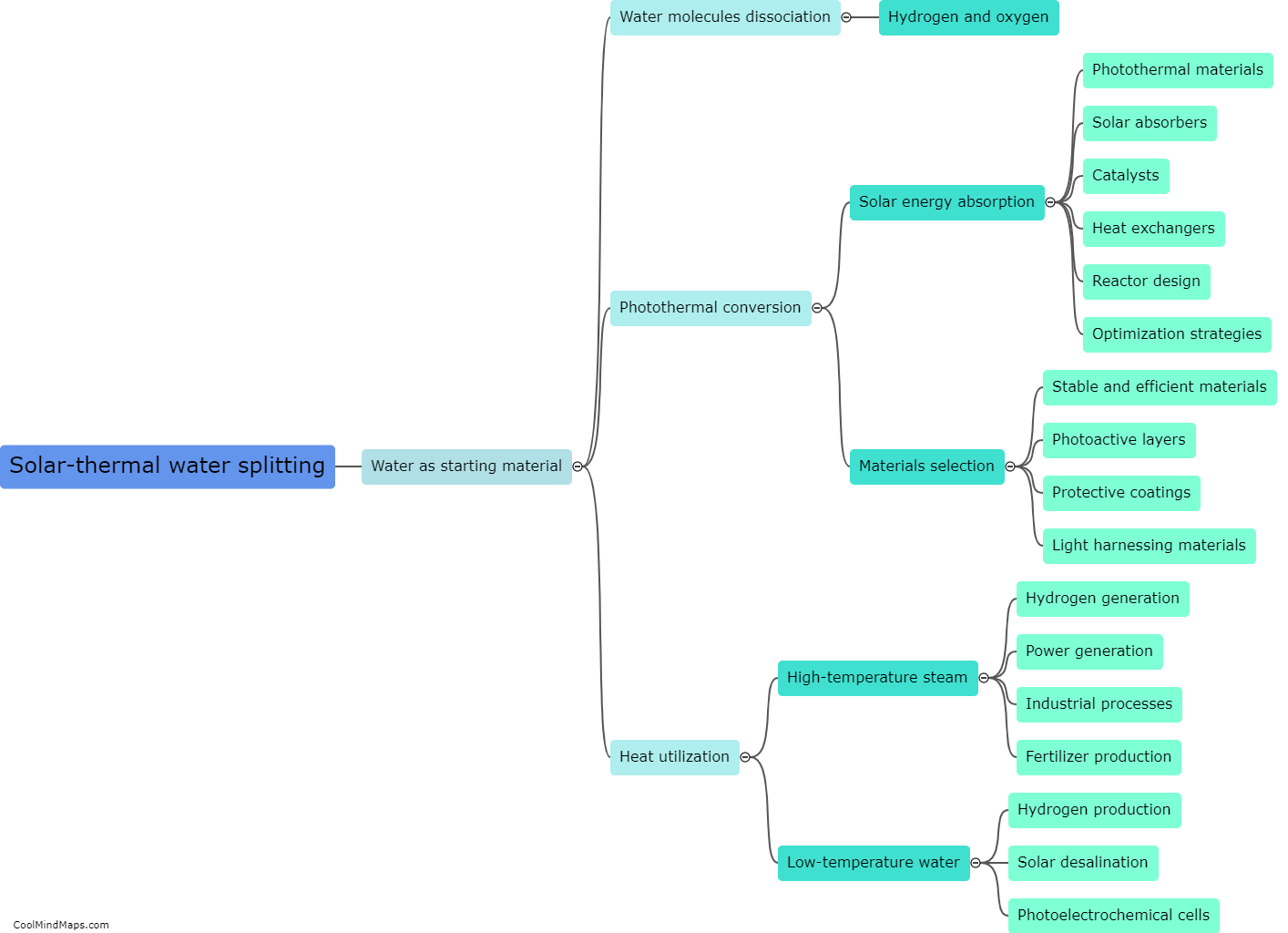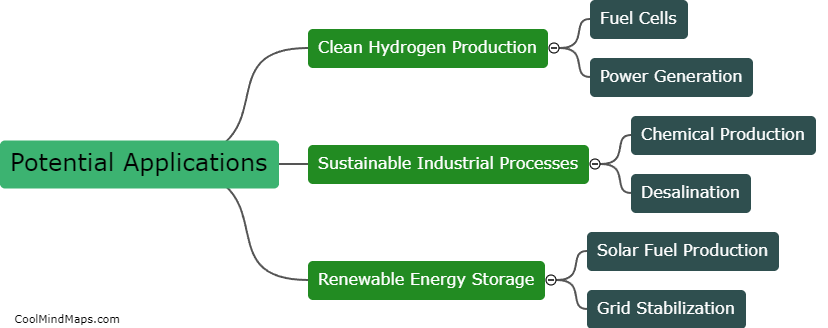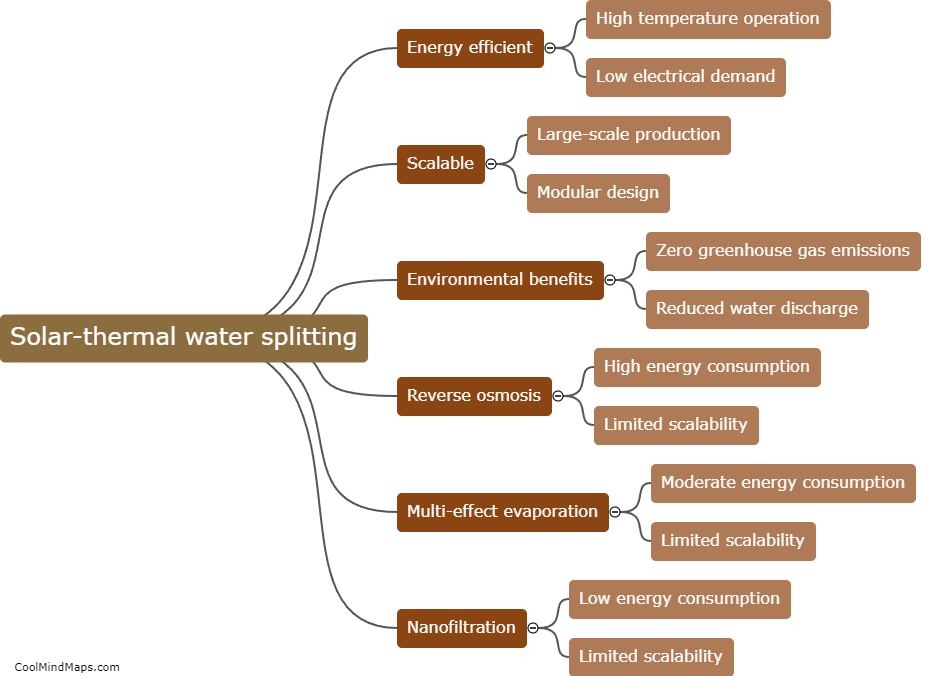How can solar-thermal water splitting technology be used in desalination?
Solar-thermal water splitting technology has emerged as a promising approach for desalination, which refers to the process of removing salt and impurities from seawater to obtain fresh water. This innovative technology utilizes solar energy to split water molecules into hydrogen and oxygen, where the byproduct of this process can be utilized for clean energy production. By incorporating solar-thermal water splitting technology into desalination systems, the heat generated from the solar-thermal process can be harnessed to evaporate seawater, separating the freshwater vapor from the salt. This integration of technologies offers a sustainable and environmentally friendly solution to meet the increasing global demand for freshwater, as it eliminates the need for energy-intensive desalination methods such as reverse osmosis. Furthermore, the utilization of solar-thermal water splitting technology not only provides freshwater but also yields hydrogen, a green and versatile fuel source, making it a promising solution for addressing both the water and energy challenges faced globally.

This mind map was published on 4 October 2023 and has been viewed 140 times.











